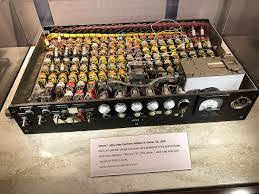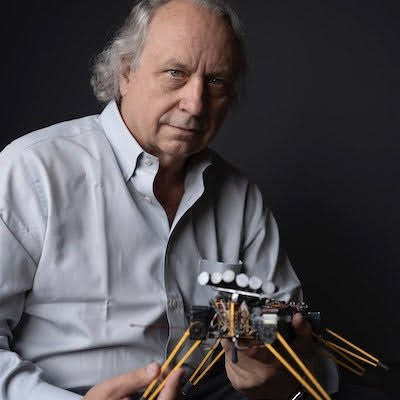In his opinion, computers were "huge mechanical brains" or massive, automated, information-processing, thinking devices that should be employed for the benefit of society.
Berkeley's Association for Computing Machinery (cofounded in 1947), his firm Berkeley Associates (founded in 1948), his book Giant Brains (1949), and the periodical Computers and Automation all encouraged early, peaceful, and commercial computer innovations (established in 1951).
Berkeley saw computers as devices that ran on their own, without the need for human involvement.
Simply press the start button, and "the machine begins to whirr and writes out the answers as they are obtained" (Berkeley 1949, 5).
Because they processed information, computers had cognitive functions as well.
Berkeley saw human mind as "a process of storing knowledge and then referring to it, via a process of learning and remembering" (Berkeley 1949, 2).
A computer may think similarly; it "automatically passes information from one portion of the machine to another, [with] flexible control over the order of its actions" (Berkeley 1949, 5).
The ENIAC, the first electronic general-purpose digital computer, took up the whole basement of the Moore School of Electrical Engineering at the University of Pennsylvania in 1946.
Berkeley was involved in the application of symbolic logic to early computer designs, in addition to shaping the role of computers in the popular imagination.
He graduated from Harvard University with a bachelor's degree in mathematics and logic, and by 1934, he was working in Prudential Insurance's actuarial department.
Claude Shannon, an electrical engineer at Bell Labs, released his groundbreaking work on the application of Boolean logic to automated circuit design in 1938.
At Prudential, Berkeley advocated Shannon's results, asking the insurance company to use logic in its punch card tabulations.
The New York Symbolic Logic Group was founded in 1941 by Berkeley, Shannon, and others to develop logic applications in electronic relay computing.
Berkeley joined in the US Navy when the US entered World War II (1939–1945) in 1941, and was later transferred to Howard Aiken's Lab at Harvard University to assist create the Mark II electromechanical computer.
Berkeley returned to Prudential, convinced of the commercial potential of computers, based on his experiences with Mark II.
Berkeley demonstrated in 1946 that computers could properly calculate a difficult insurance issue, in this instance the cost of a policy change, using Bell Labs' general-purpose relay calculator (Yates 2005, 123–24).
Berkeley met John William Mauchly in 1947 at the Harvard Symposium on Large Scale Digital Calculating Machinery.
Prudential and John Adam Presper Eckert and Mauchly's Electronic Control Company (ECC) signed a contract for the creation of a general-purpose computer that would aid insurance calculations after their meeting.
The UNIVAC was born from that general-purpose machine (in 1951).
Prudential, on the other hand, chose not to adopt UNIVAC and instead reverted to IBM's tabulating technology.
UNIVAC's first commercial contract was in payroll computations for General Electric (Yates 2005, 124–27).
Berkeley devoted the rest of his life to promoting Giant Brains, including the application of symbolic logic in computer technology, as well as other social activist concerns.
Berkeley followed Giant Brains (1949) with Brainiacs (1959) and Symbolic Logic and Intelligent Machines (1960).
He also established correspondence courses in general knowledge, computers, mathematics, and logic systems, as well as the Roster of Organizations in the Field of Automatic Computing Machinery, the first periodical for computing specialists.
From 1951 until 1973, this publication was renamed Computers and Automation.
You may also want to read more about Artificial Intelligence here.
See also:
Cognitive Computing; Symbolic Logic.
Further Reading:
Berkeley, Edmund C. 1949. Giant Brains, or Machines That Think. London: John Wiley & Sons.
Berkeley, Edmund C. 1959a. Brainiacs: 201 Electronic Brain Machines and How to Make Them. Newtonville, MA: Berkeley Enterprises.
Berkeley, Edmund C. 1959b. Symbolic Logic and Intelligent Machines. New York: Reinhold.
Longo, Bernadette. 2015. Edmund Berkeley and the Social Responsibility of Computer Professionals. New York: Association for Computing Machinery.
Yates, JoAnne. 2005. Structuring the Information Age: Life Insurance and Technology in the Twentieth Century. Baltimore: Johns Hopkins University Press.









